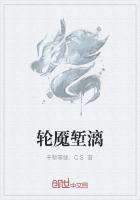Dorothy left Bunbury the same way she had entered it and when they were in the forest again she said to Billina:
"I never thought that things good to eat could be so dis'gree'ble."
"Often I've eaten things that tasted good but were disagreeable afterward," returned the Yellow Hen. "I think, Dorothy, if eatables are going to act badly, it's better before than after you eat them."
"P'raps you're right," said the little girl, with a sigh. "But what shall we do now?"
"Let us follow the path back to the signpost," suggested Billina.
"That will be better than getting lost again."
"Why, we're lost anyhow," declared Dorothy; "but I guess you're right about going back to that signpost, Billina."
They returned along the path to the place where they had first found it, and at once took "the other road" to Bunnybury. This road was a mere narrow strip, worn hard and smooth but not wide enough for Dorothy's feet to tread. Still, it was a guide, and the walking through the forest was not at all difficult.
Before long they reached a high wall of solid white marble, and the path came to an end at this wall.
At first Dorothy thought there was no opening at all in the marble, but on looking closely she discovered a small square door about on a level with her head, and underneath this closed door was a bell-push.
Near the bell-push a sign was painted in neat letters upon the marble, and the sign read:
NO ADMITTANCE EXCEPT ON BUSINESS
This did not discourage Dorothy, however, and she rang the bell.
Pretty soon a bolt was cautiously withdrawn and the marble door swung slowly open. Then she saw it was not really a door, but a window, for several brass bars were placed across it, being set fast in the marble and so close together that the little girl's fingers might barely go between them. Back of the bars appeared the face of a white rabbit--a very sober and sedate face--with an eye-glass held in his left eye and attached to a cord in his button-hole.
"Well! what is it?" asked the rabbit, sharply.
"I'm Dorothy," said the girl, "and I'm lost, and--"
"State your business, please," interrupted the rabbit.
"My business," she replied, "is to find out where I am, and to--"
"No one is allowed in Bunnybury without an order or a letter of introduction from either Ozma of Oz or Glinda the Good," announced the rabbit; "so that settles the matter," and he started to close the window.
"Wait a minute!" cried Dorothy. "I've got a letter from Ozma."
"From the Ruler of Oz?" asked the rabbit, doubtingly.
"Of course. Ozma's my best friend, you know; and I'm a Princess myself," she announced, earnestly.
"Hum--ha! Let me see your letter," returned the rabbit, as if he still doubted her.
So she hunted in her pocket and found the letter Ozma had given her.
Then she handed it through the bars to the rabbit, who took it in his paws and opened it. He read it aloud in a pompous voice, as if to let Dorothy and Billina see that he was educated and could read writing.
The letter was as follows:
"It will please me to have my subjects greet Princess Dorothy, the bearer of this royal missive, with the same courtesy and consideration they would extend to me."
"Ha--hum! It is signed 'Ozma of Oz,'" continued the rabbit, "and is sealed with the Great Seal of the Emerald City. Well, well, well!
How strange! How remarkable!"
"What are you going to do about it?" inquired Dorothy, impatiently.
"We must obey the royal mandate," replied the rabbit. "We are subjects of Ozma of Oz, and we live in her country. Also we are under the protection of the great Sorceress Glinda the Good, who made us promise to respect Ozma's commands."
"Then may I come in?" she asked.
"I'll open the door," said the rabbit. He shut the window and disappeared, but a moment afterward a big door in the wall opened and admitted Dorothy to a small room, which seemed to be a part of the wall and built into it.
Here stood the rabbit she had been talking with, and now that she could see all of him, she gazed at the creature in surprise. He was a good sized white rabbit with pink eyes, much like all other white rabbits. But the astonishing thing about him was the manner in which he was dressed. He wore a white satin jacket embroidered with gold, and having diamond buttons. His vest was rose-colored satin, with tourmaline buttons. His trousers were white, to correspond with the jacket, and they were baggy at the knees--like those of a zouave--being tied with knots of rose ribbons. His shoes were of white plush with diamond buckles, and his stockings were rose silk.













